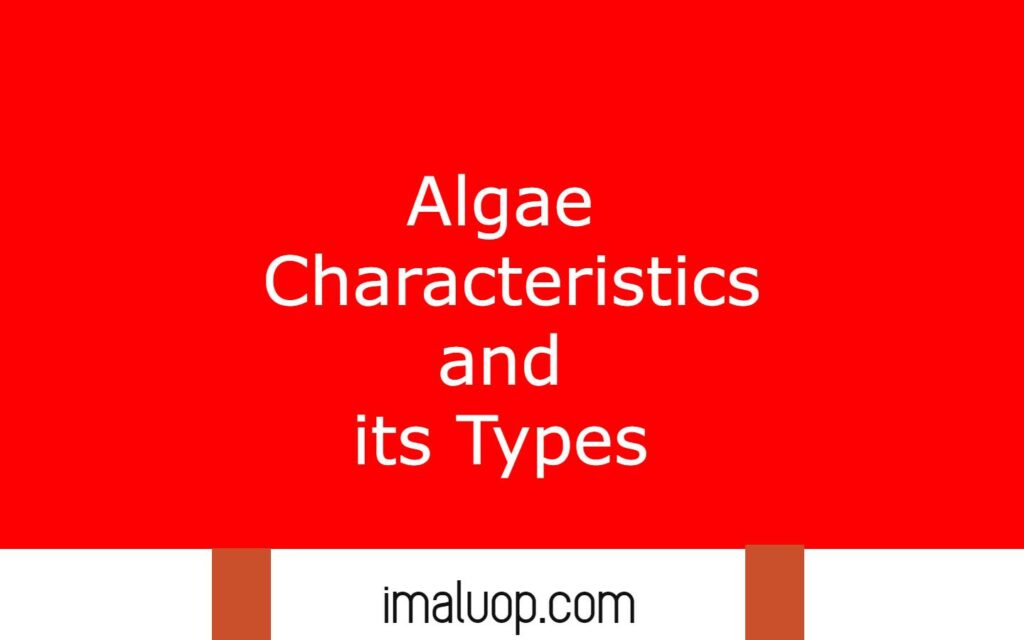Hi, today we would know about a special type of organisms who were present on earth from very early. Algae Characteristics and its types will help you to know about their basic character and how many types of them present in our nature. They live almost everywhere like ponds, seas, rivers, lakes, brackish water even in snow they live easily.
Different coloured pigments present in them give them different colours and it looks amazing. Most of the algae have a huge amount of chlorophyll which makes them green like other plants look like. But some algae have pigment of various colours and in which medium they live the medium also appears colorful.
They may be unicellular or multicellular for example diatoms and dinoflagellates are unicellular algae while there are many examples of multicellular algae. Some characters of algae make you think it’s like plants but some features are different from plants.
For example they do not have true stem and leaf like advanced plants and they lack vascular tissue unlike most of the higher plants. Algae generally grow in the area where water content is present less or more that is why they are found always near water bodies.
Table of Contents
Key Characteristics of Algae:
Now we discuss the major criteria which help you to differentiate between algae and higher plants.
Algae are Photosynthetic:
The pigment present in algae helps them to produce their own which is a similar character of higher plants.
Cellular Level in Algae:
You can observe both unicellular organisation and multicellular organisation in algae where unicellular algae make colonies.

True Stem Leaves and Roots are Absent:
Some parts in algae look like plant stem, leaves and root but they are not actual stem, leaves and root.
Algae Prefer Aquatic Habitat:
Algae are mostly found near water bodies where sufficient amounts of moisture is present.
Algae Make Spore:
In algae a method for reproduction is formation of spore. The spore can tolerate extreme environmental conditions when their surroundings become in favour the spore germinate and they multiply their life.
Algae have some features which look like animals but they have some other features which makes them resemble plants. The Photosynthetic capability makes you think of them as plants while they have centrioles, flagella which make you think that they look like animals.
Types of Algae:
Depending upon the pigment present in them algae are categorised into many types but we will discuss some of them.
Green Algae:
Major pigments in green algae are chlorophyll a and chlorophyll b which makes them green appearance. They also have some accessory pigment xanthophylls and beta carotene they generally flagellate.
Some examples of green algae are spirogyra, volvox, and Ulothrix most of them form colonies. Green algae is something found with other organisms to make symbiotic relationships where both the two organisms get benefits.
Red Algae:
In red algae or rhodophyta presence of phycocyanin and phycoerythrin give the algae red appearance. Chlorophyll is present in small amounts but other pigments are dominant. Red algae grows in marine environments as well as fresh water bodies like rivers.
Sometimes we use a term algae in some organisms which are not actually algae for example blue green algae are not actually algae. Blue green algae are actually a primitive type of bacteria but they are popularly known as blue green algae.
Blue green algae or cyanobacteria also live in moisture abundant regions they mostly found in water bodies or nearby water bodies. Algae are eukaryotic but blue green algae are prokaryotes they evolved very early they can release oxygen.
Some blue green algae like Nostoc are able to bind the atmospheric nitrogen in soil which makes the soil rich in nitrogen for this reason nitrogen fixing blue green algae are very popular in agriculture.
Reference: Algae Characteristics and its Types
Read More: Algal Blooms and Its Reason
Hi Everyone!!! Welcome to Imaluop. Imaluop always try to learn some new and he want to share to other people. Here we will try to learn various topics on Science, specially on Biological Sciences.
